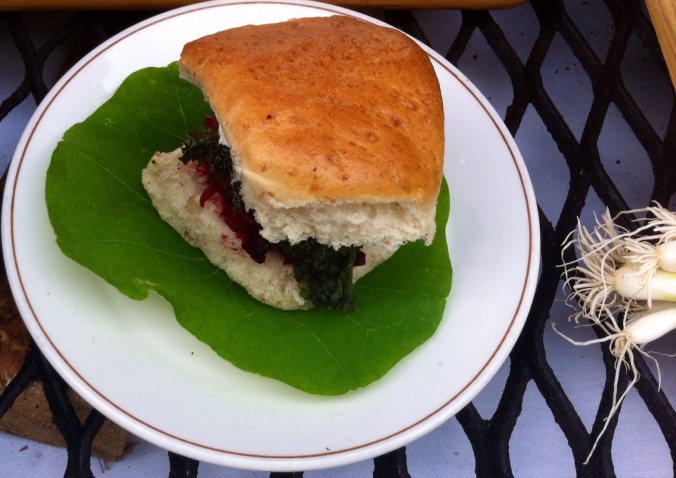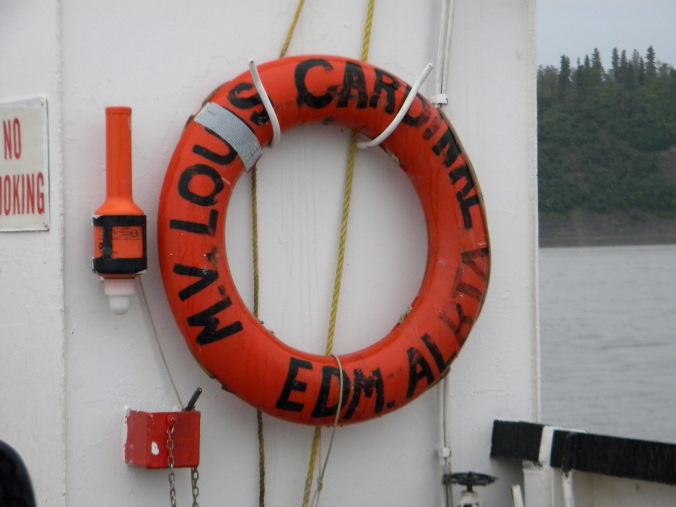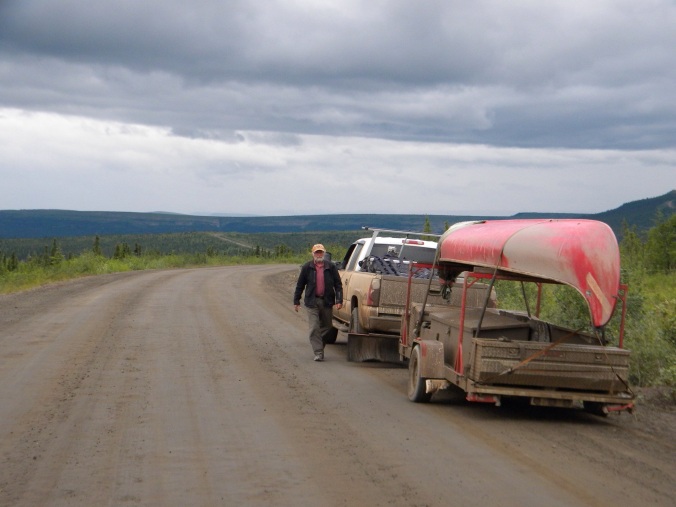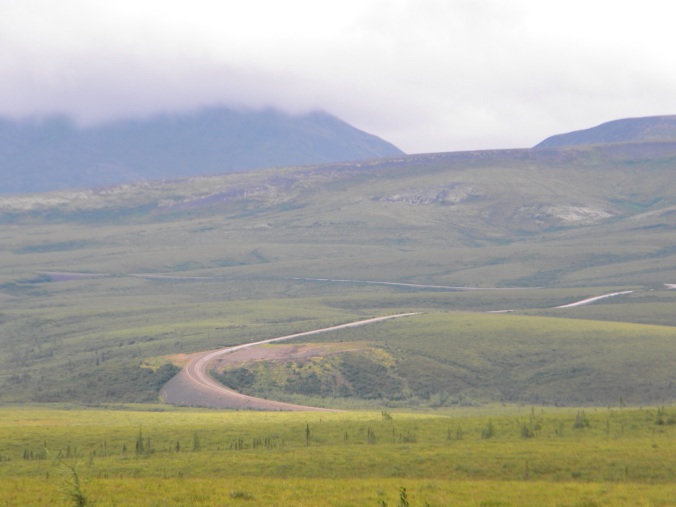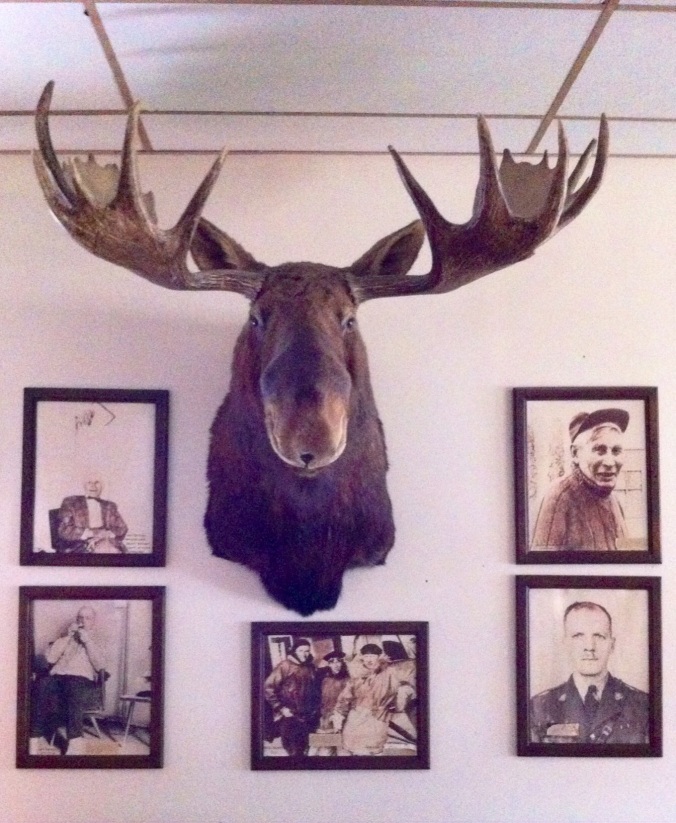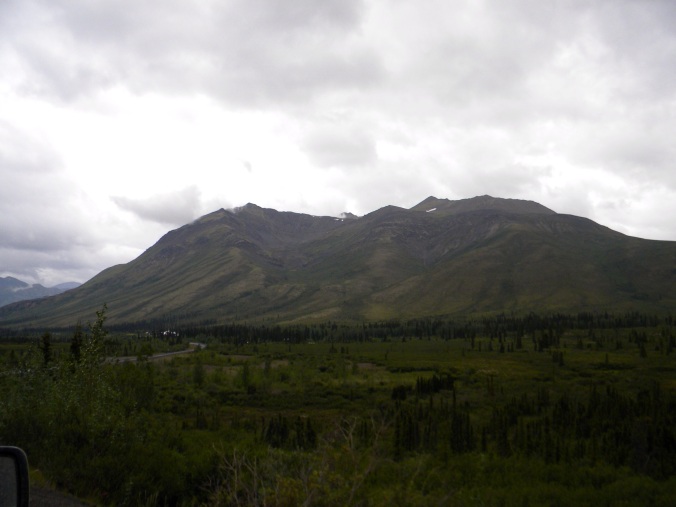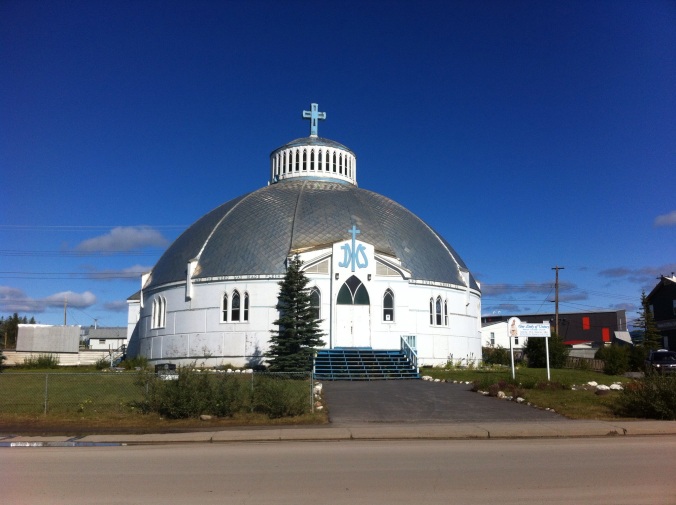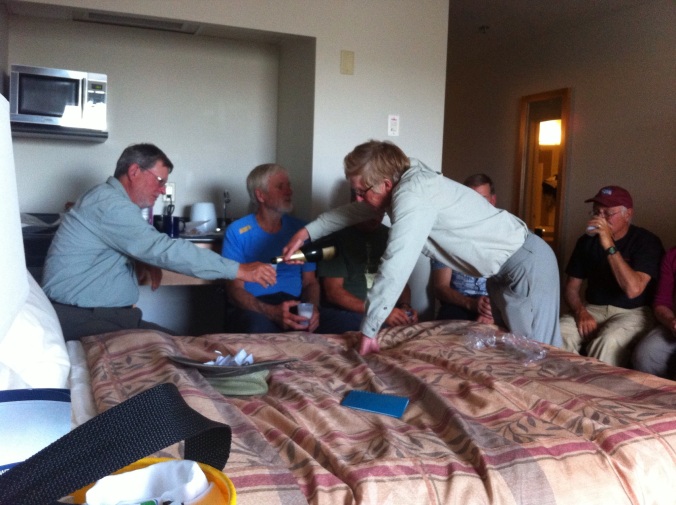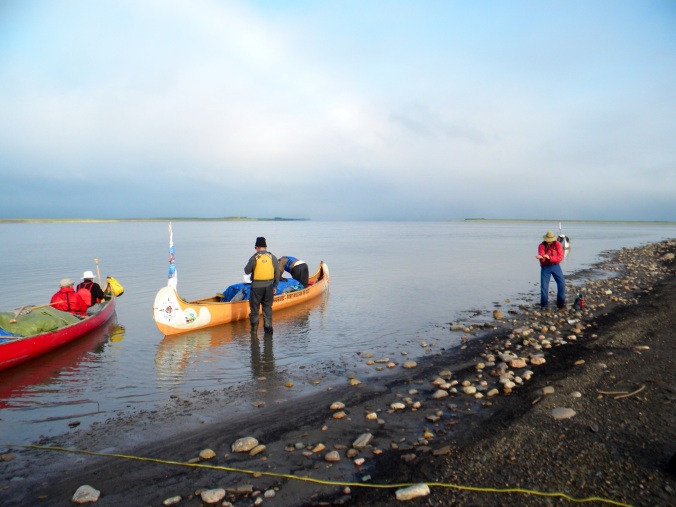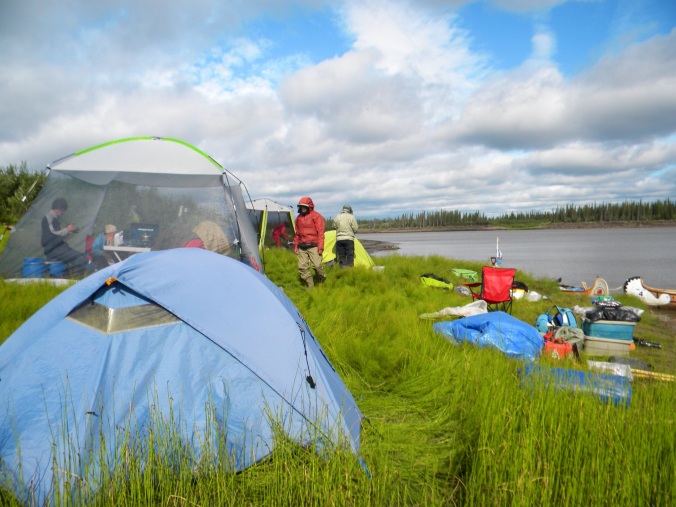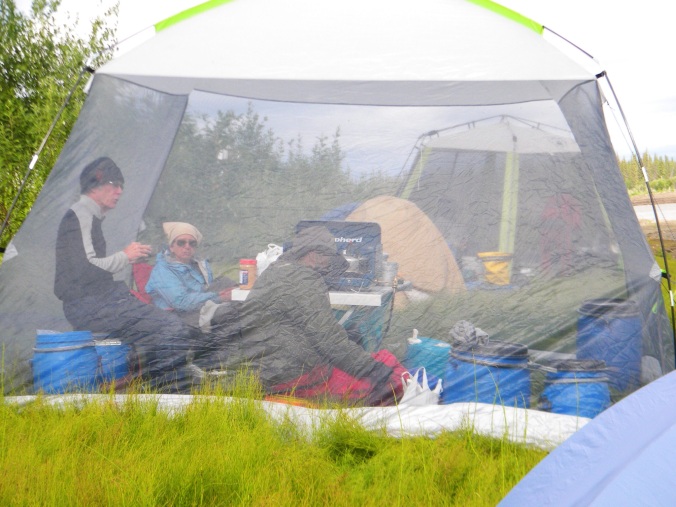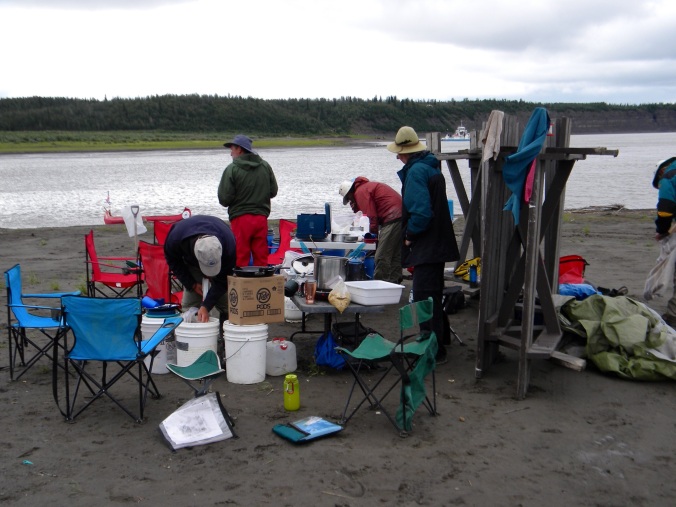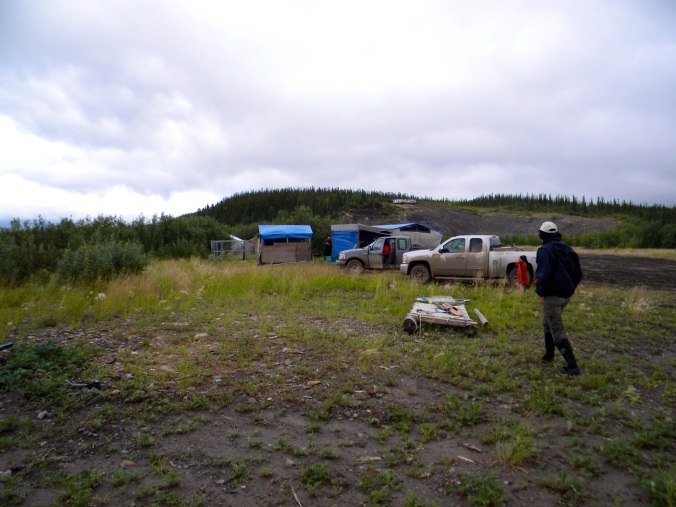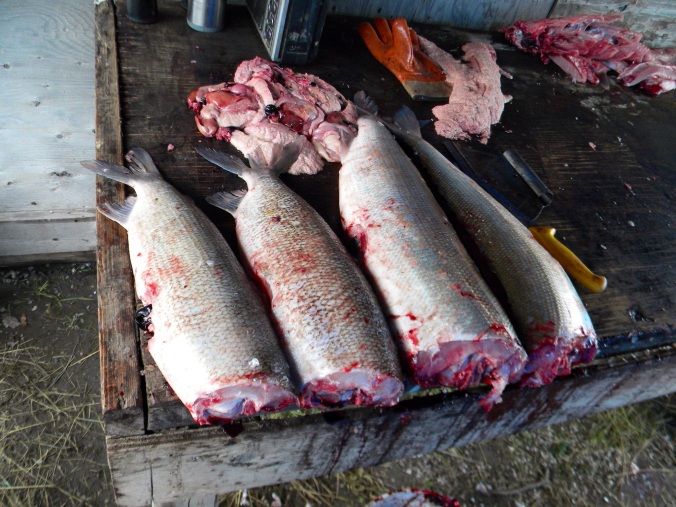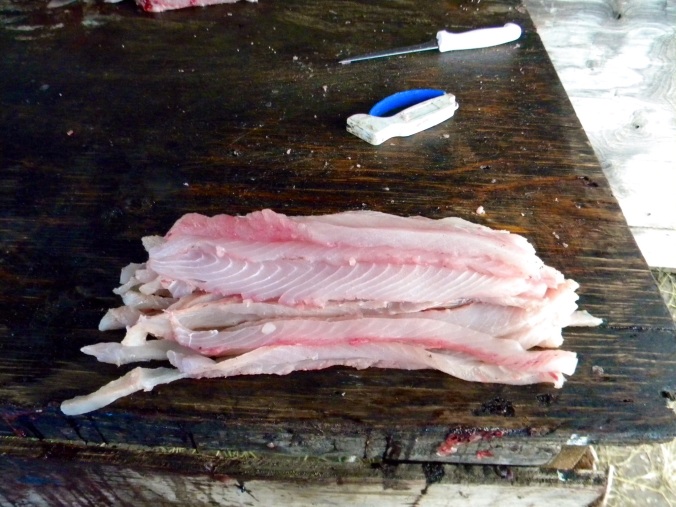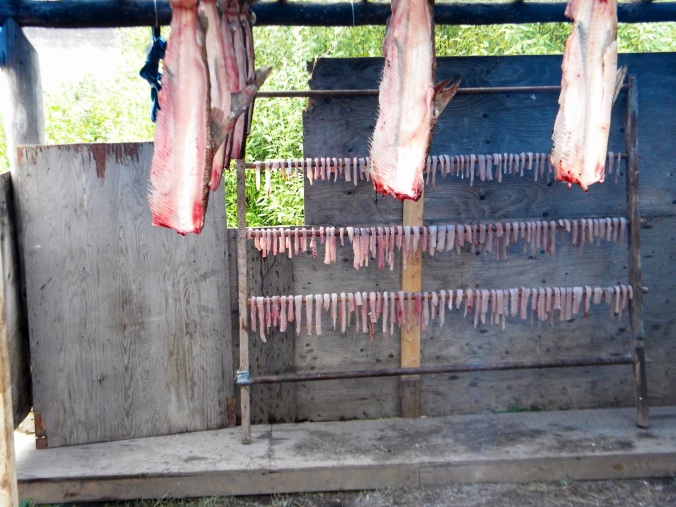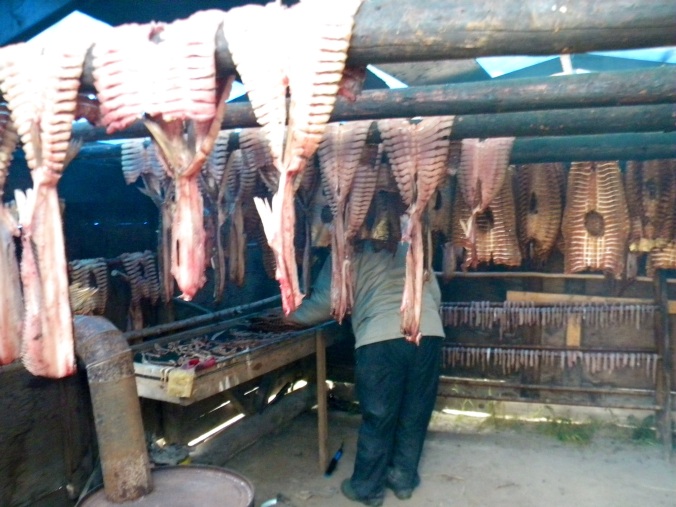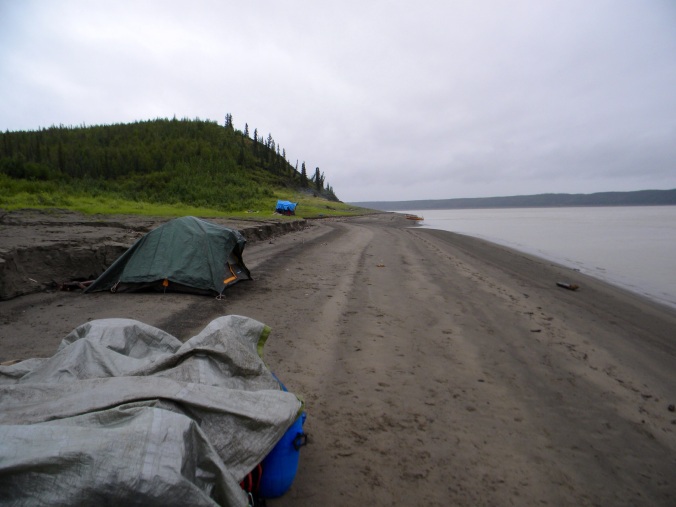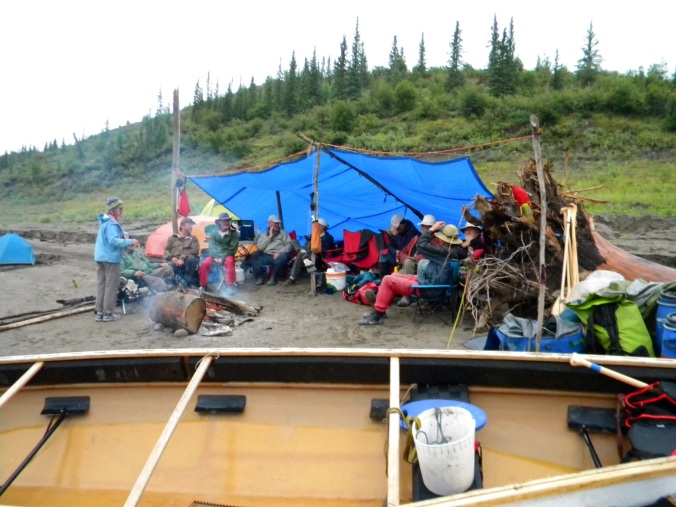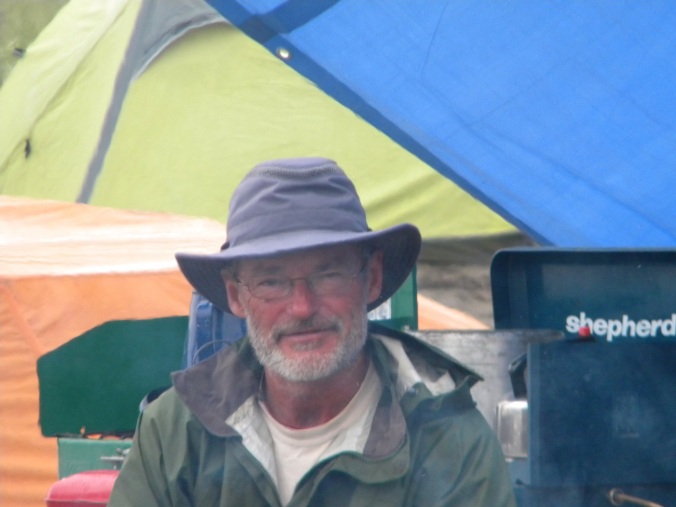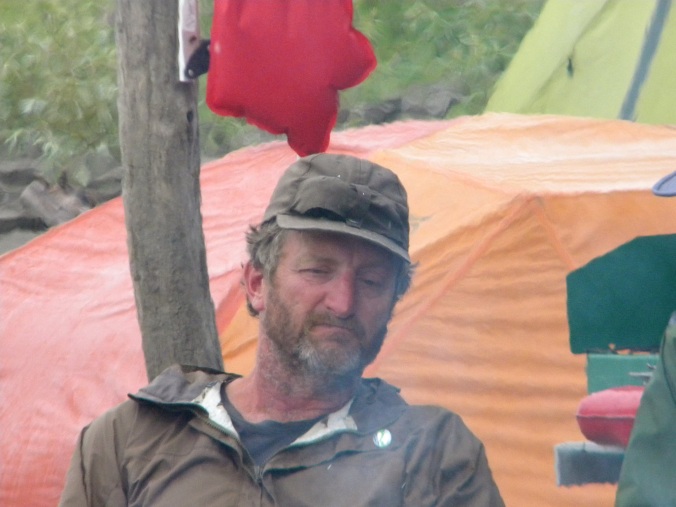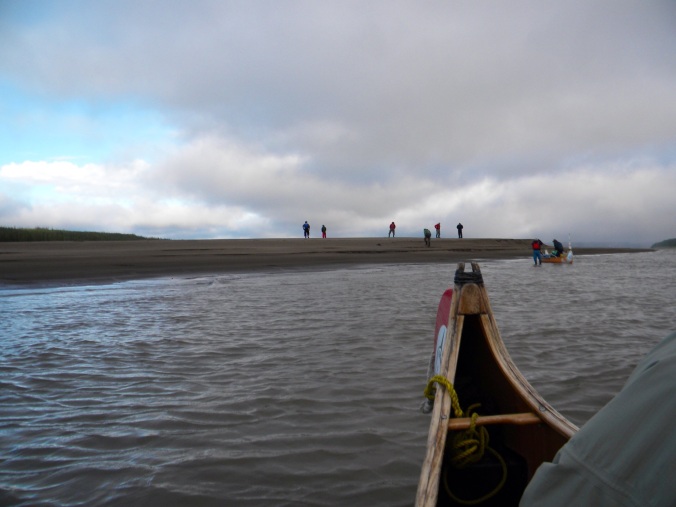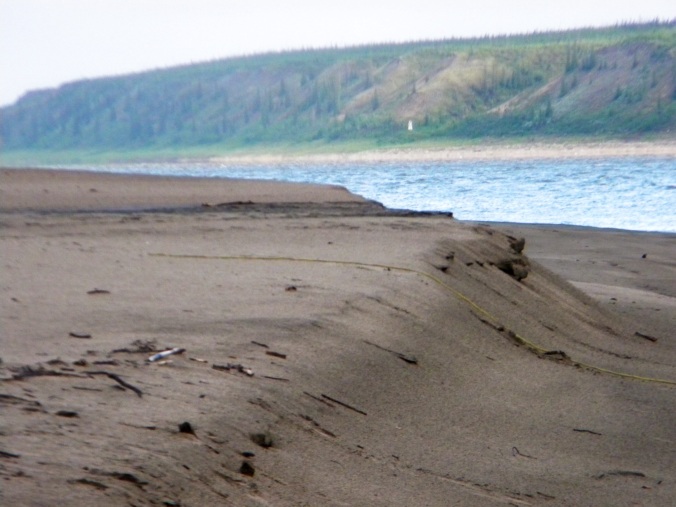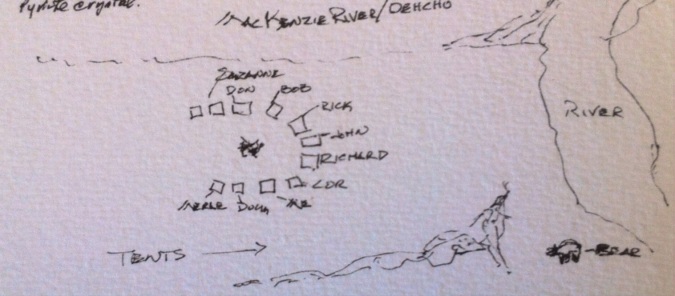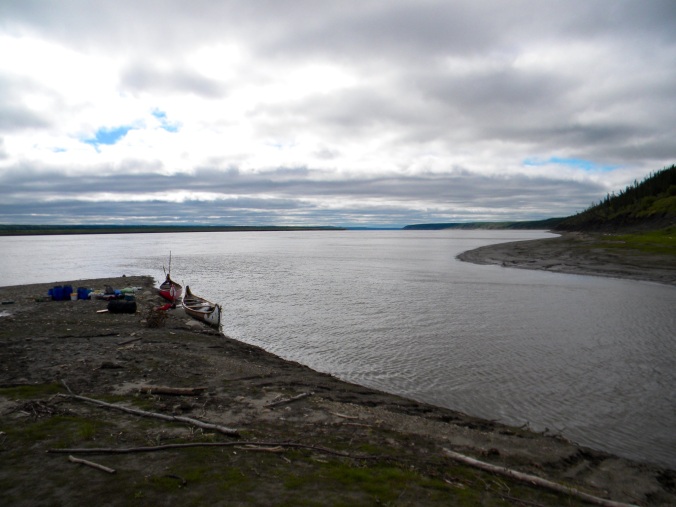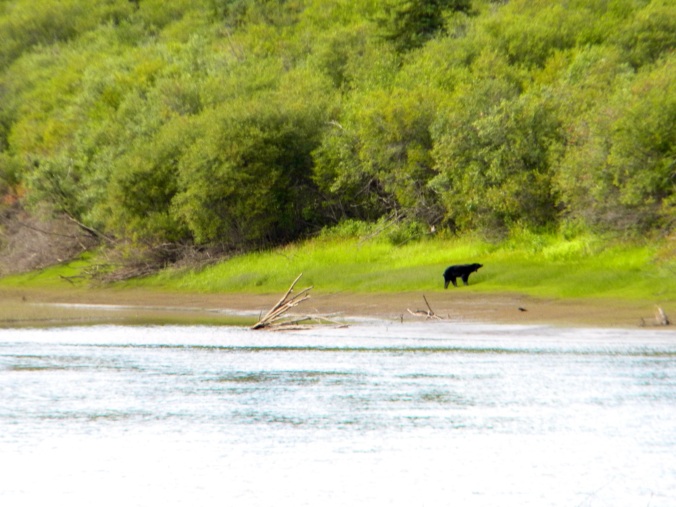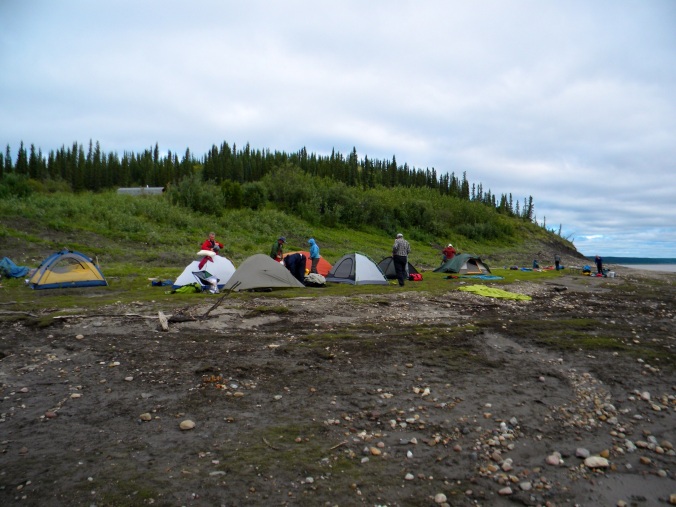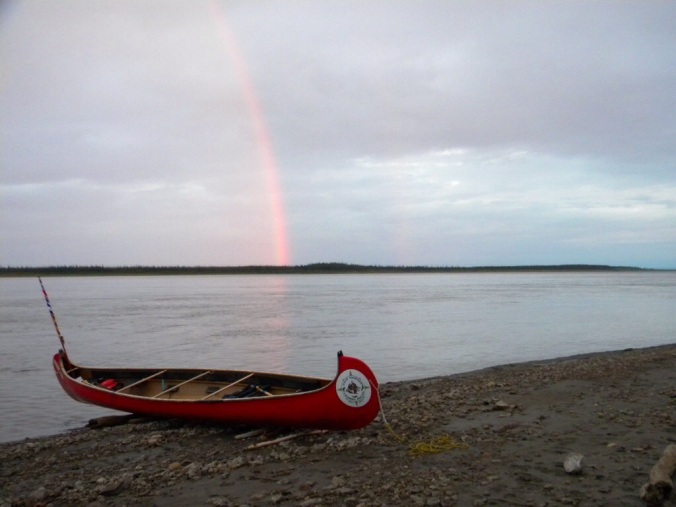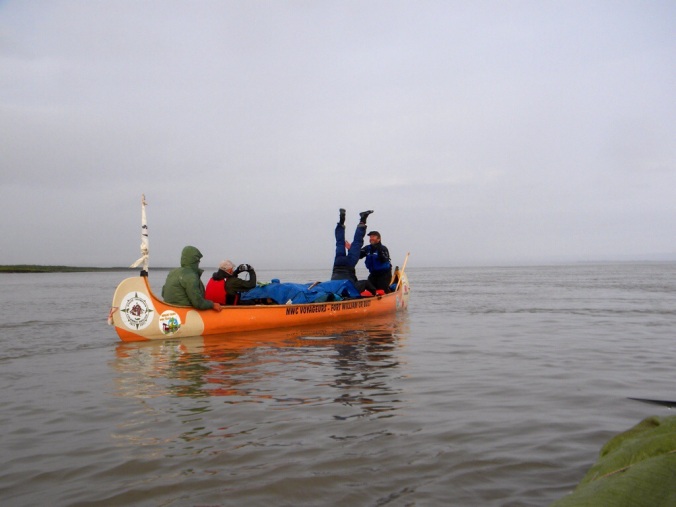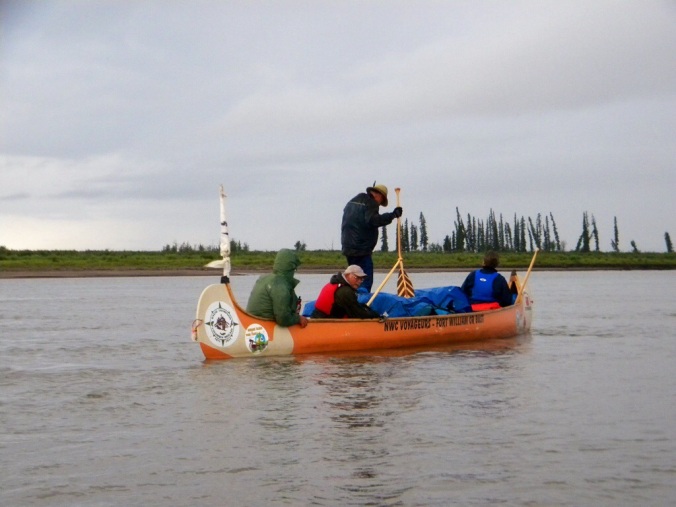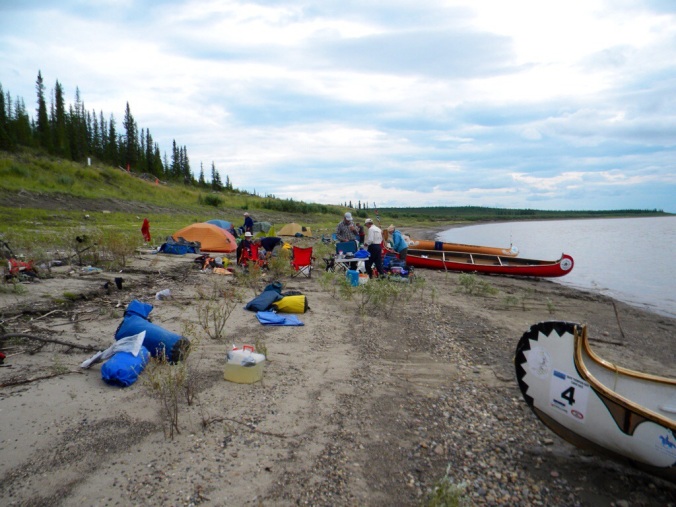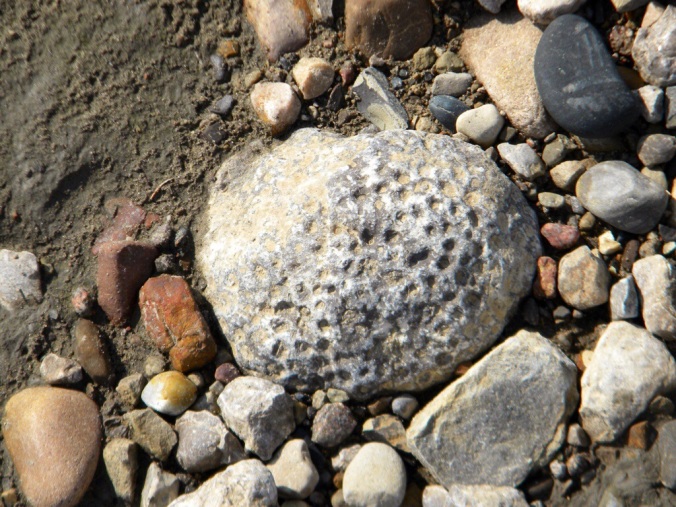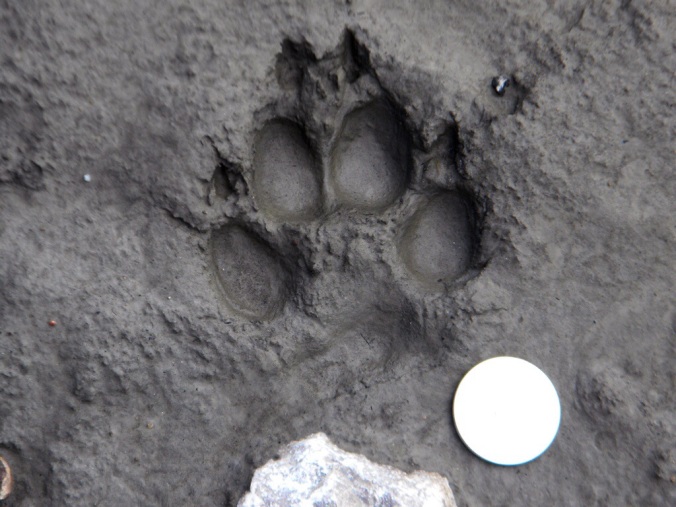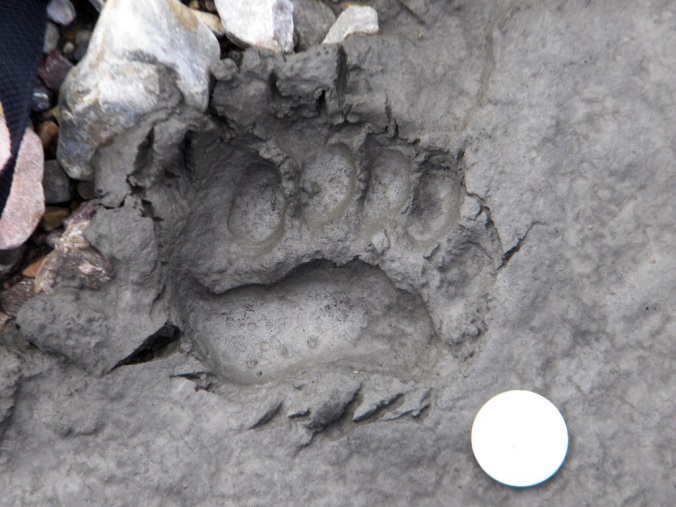Wednesday, July 30th, 2014
I heard loons through the night; what a wonderful calming sound of the wilderness and the north – others commented on the serenade of the loons last night too. When we all began to roll out of our tents about 4am we were pleased to know it hadn’t rained. The mosquitos, however, did show up in numbers! Fortunately, our mosquito tent kept them somewhat at bay so our breakfast was reasonably free of them. What was more interesting and challenging with so many mosquitos hovering around was heading into the shoreline brush with a shovel and roll of toilet paper for that part of the morning routine for everyone.
This morning we were on the water by about 6:10am and heading for our final destination, Inuvik! The first two to three hours were actually fairly pleasant. As with the last few days, however, the cold north wind and rain set hard upon us as we paddled on.

This is a typical scene from the past day’s paddle into Inuvik.
Shore breaks this morning were few and far between because the river banks in the East Channel are the consistency of Jell-o. At one point, I watched Doug try to step out of the bow of the canoe to take a shore bio-break and in a heartbeat he was up past his knee in that sludge! What breaks we did take were short because if we dallied for any amount of time there was a real risk of getting cold and that would be the beginning of things much worse to contemplate. The paddling itself was slow, both into the bitterly cold wind and because the current was getting slower and slower by the minute. At one point after a quick shore break, we were so cold I wondered if we’d have to stop to build a fire, but we caught a second wind and snuck through the potential crisis.
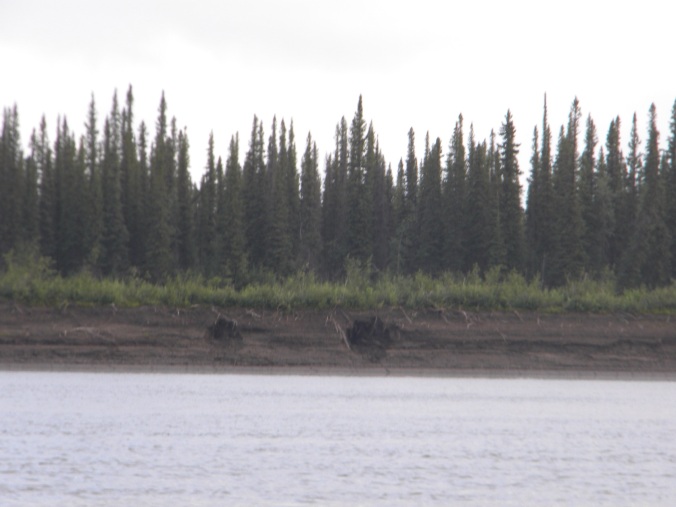
The distinctive shore line of the MacKenzie River in the East Channel of the delta.
As we neared Inuvik, we caught sight of one full grown Bald Eagle and four juveniles. I have seen a lot of Bald Eagles, but these juveniles were by far the largest specimens I have ever seen! As they glided from tree to tree along the shore, crows kept pestering them, always staying a safe distance away at the same time.
Finally, we turned the last bend in the river toward Inuvik in the distance, and the wind picked up with even more force. Later that evening Bob made a great observation that, rounding that last bend it truly looked as if we were paddling up hill because of the lay of the land and the huge waves building in front of us. The East Channel is perhaps up to 150M wide at Inuvik, but the wind was blowing straight down the river with the consequence that as we neared the town the waves were getting bigger and bigger – and we were on the wrong side of the river to land the canoes!
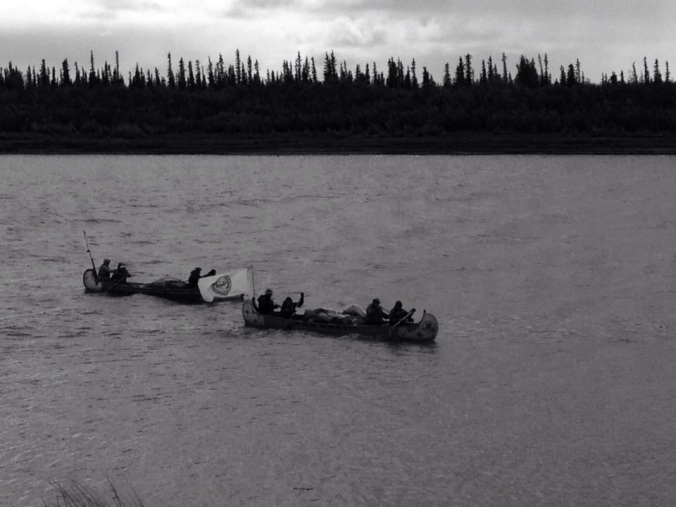
These three photos were taken by one of brandy’s friends who lives in Inuvik – Brandy had asked a number of her Inuvik friends to look for us coming into the town and there we were.
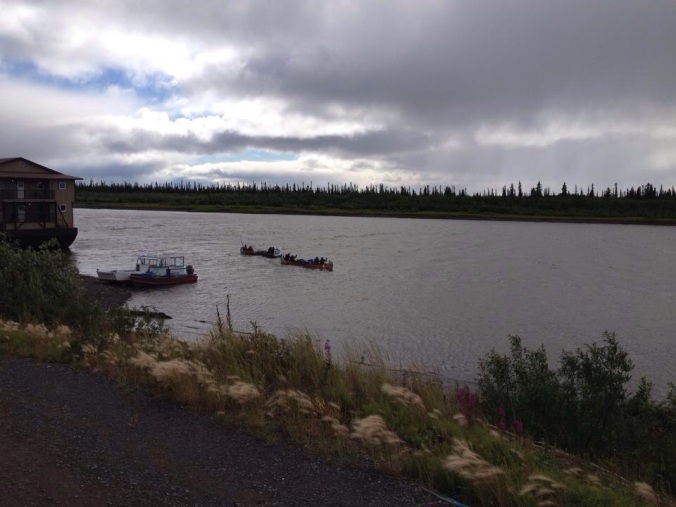
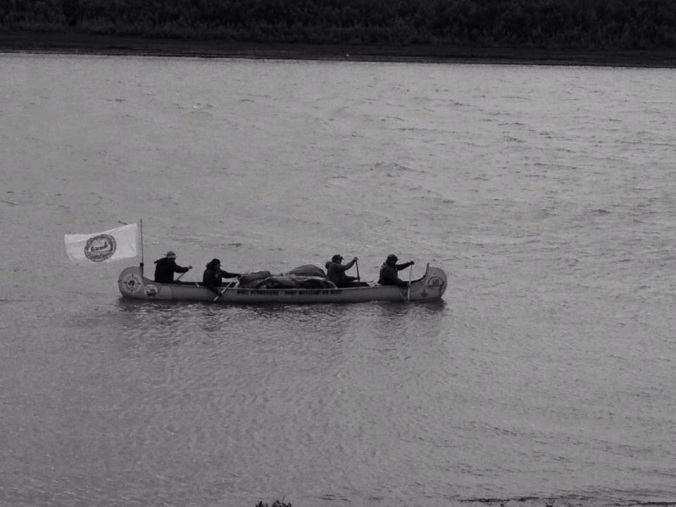
When it did come time to cross the wave-filled river, the only saving grace to the wind we faced was its direction. Coming straight on us like that, we could steer directly into the waves and ferry sideways across the channel to the boat launch. The size of these waves matched some of the bigger ones we’d seen earlier in the journey and, although we did take on water as we crashed down into the oncoming swells, it wasn’t so much we needed to worry. We made it across and pulled in just up river of a large barge holding a full work camp on its deck. Within a few minutes, the other two crews joined us. We spent a few minutes at this spot but, talking with a local fellow who came down to see us, we knew we’d have to pull into the waves again and go around the huge barge to the full boat launch about 200M downstream. So back in the canoes we went, and we could all feel the relief when we pulled into shore for this final leg of our expedition.

Our Mackenzie River – Dehcho Expedition 2014 crew on the banks of the river in Inuvik.
My Niece, Brandy, had arranged for us to store our trucks and boat trailers in the work yards of a local contractor she knew, Kurt Wainman. I called his cell number and he sent one of his crew to pick up our three drivers to retrieve the vehicles. We unloaded the canoes and loaded them and our gear onto the vehicles and trailers and headed to the MacKenzie Hotel on Inuvik’s Main Street for a well-deserved shower, meal (that wasn’t dehydrated) and a beverage! As were doing the loading, a vehicle pulled up and I went over to talk to the folks who were sitting all wonderfully warm tucked in their vehicle. They were from Tuktoyaktuk and had come to Inuvik by boat a few days earlier. Their local observation was that there was no way they were going to try to drive the boat home in this weather – the very weather we had just faced paddling into town!
When we got to the hotel, I’m not sure I can adequately describe how wonderful it felt to peel off my cold and wet and dirty clothes and to step into that steaming shower at the hotel. I think it took at least a two or three washings to get my hair clean!
The second order of business was to meet the other expedition members in the hotel lounge for a beverage or two. One by one the entire crew sauntered in looking all clean and somewhat refreshed and tidy and certainly smelling better. The lounge also served a great dinner (Muskox Burger) so we stayed and visited for the evening and recounted so many episodic pieces of our journey over the last weeks.
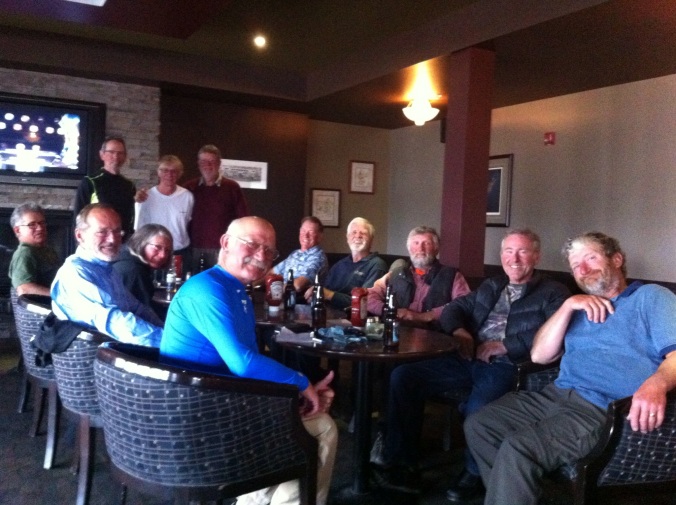
The expedition crew relaxing in the MacKenzie Hotel in Inuvik.
Rick had set up a ‘pool’ as to how many kilometres we’d travel by the end of the trip. With great ceremony he announced the final three entries who were vying for the $60 prize. In the end, Doug took the prize getting closest to the final total of 1488km. We also enjoyed what we were coming to call – Rick’s mosquito beer.
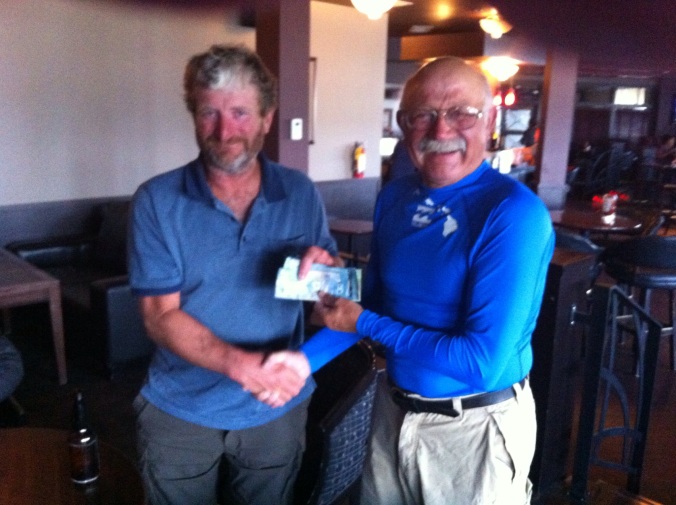
Rick presenting Doug with his winnings.
This was the final day of our river journey down Canada’s longest waterway – the mighty MacKenzie River – Dehcho. We prevailed. We were prepared. We worked very hard. We were lucky. We are all so proud of our accomplishment, and it will stand as a benchmark event in all our lives I am sure.
Following is the account of our trip back from Canada’s Arctic – down the Dempster Highway and eventually home.






